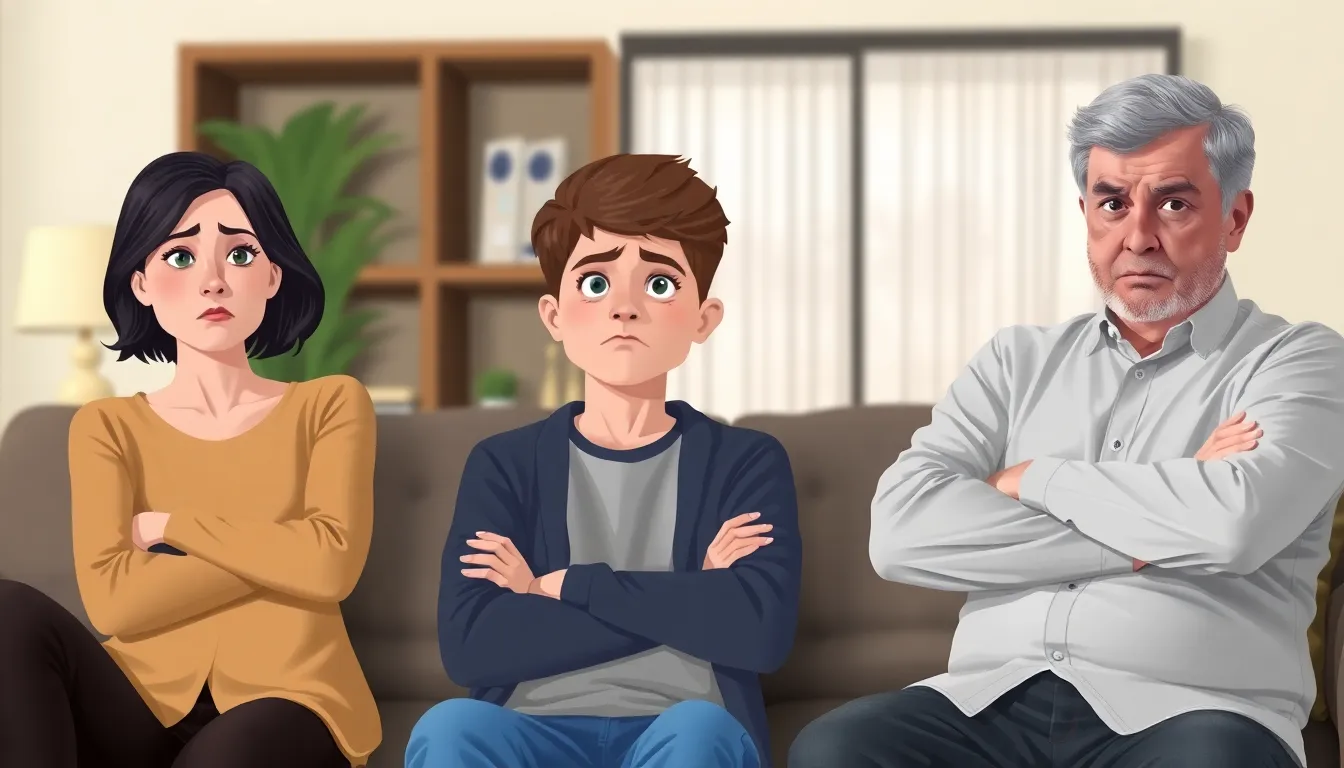The Best Fluffy Pancakes recipe you will fall in love with. Full of tips and tricks to help you make the best pancakes.

Strained Family Relationships: Transform Tension into Harmony with These Key Strategies
Family can be a source of love and support, but sometimes it feels more like a sitcom gone wrong. Strained family relationships can turn holiday dinners into awkward standoffs and family gatherings into a game of dodgeball—except the balls are emotional baggage. Whether it’s that uncle who can’t stop sharing his controversial opinions or the sibling rivalry that never seems to fade, navigating these dynamics can be a real challenge.
Strained Family Relationships
Strained family relationships often result from unresolved conflicts and emotional disconnects. Clarifying these issues helps in navigating the emotional landscape effectively.
Common Causes
Conflicting values usually lead to disagreements among family members. Financial stress often exacerbates tensions, creating a cycle of blame. Poor communication skills can result in misunderstandings that fuel resentment. Lives that evolve in different directions may cause feelings of isolation among relatives. Unresolved past grievances frequently linger, affecting current interactions. Each of these factors contributes to a complex web of strained dynamics.
Signs and Symptoms
Feelings of anxiety during family gatherings indicate deeper issues. Frequent arguments or defensiveness signal unresolved conflicts among members. Avoiding family events can reflect a desire to escape discomfort. Expressions of anger or sarcasm emerge when communication breaks down. Withdrawal from conversations often denotes underlying pain or frustration. Observing these signs aids in identifying and addressing strained relationships.
Impact on Family Dynamics

Strained family relationships significantly affect family dynamics, influencing interactions and overall emotional well-being. Such dynamics create a ripple effect that extends beyond individual conflicts.
Emotional Consequences
Emotional turmoil often surfaces as anxiety, sadness, or anger. Frequent misunderstandings lead to feelings of isolation and resentment, deepening emotional divides. Defensiveness increases as individuals feel attacked, further complicating communication. A lingering sense of disappointment can overshadow familial love. Stress accumulates, transforming moments of connection into experiences of conflict. Many choose to withdraw from family gatherings, fearing confrontation. Recognition of these emotional consequences is vital for addressing strained relationships and fostering healing.
Effects on Daily Life
Strained family dynamics disrupt daily life in various ways. Individuals may struggle to focus on work or personal relationships due to constant worry about family conflict. Social activities often take a back seat as avoidance becomes common. Frequent arguments over trivial matters create a tense atmosphere at home. People might find themselves emotionally drained, affecting their overall health. Additionally, children living in such environments may develop their own struggles, impacting their relationships outside the family. Understanding the effects on daily life can help initiate change and promote healthier interactions among family members.
Strategies for Improvement
Effective strategies can foster healing and enhance communication within strained family relationships. Focusing on specific techniques and seeking professional support can significantly improve interactions.
Communication Techniques
Active listening serves as a foundation for healthy dialogue. Individuals expressing their feelings often create a safe space for others to share. Using “I” statements clarifies each person’s emotions and reduces defensiveness. Asking open-ended questions encourages dialogue instead of shutting it down. Regular family meetings can also provide a structured opportunity for discussing issues while reinforcing unity.
Professional Help
Seeking professional help can provide valuable guidance in navigating complex family dynamics. Therapists and counselors equipped with conflict-resolution skills can facilitate open conversations. Family therapy introduces a neutral environment where each member feels heard and understood. Additionally, support groups offer shared experiences and coping strategies, fostering a sense of community. Engaging in professional services often leads to improved communication and healthier relationship patterns.
The Role of Forgiveness
Forgiveness serves as a pathway to healing strained family relationships. It alleviates emotional burdens and fosters healthier connections among family members.
Importance of Letting Go
Letting go alleviates resentment that can poison relationships. Families often experience long-lasting hurt due to unresolved conflicts. Healing occurs when individuals choose to release grudges. Significant emotional weight lifts, allowing for renewed interactions. Family gatherings transform with a renewed sense of peace, enhancing overall harmony. Letting go represents strength rather than weakness, encouraging emotional resilience. It opens doors to empathy and understanding, fostering deeper connections among relatives.
Steps to Forgiveness
Recognizing the need for forgiveness initiates the healing process. First, acknowledging feelings of anger or hurt provides clarity. Second, communicating these feelings promotes understanding between family members. Each individual should then reflect on their actions and consider their role in conflicts. This reflection encourages personal growth. Additionally, expressing forgiveness, whether verbally or through written notes, reinforces intentions for reconciliation. Engaging in shared family experiences can strengthen bonds and signal a commitment to healing. Regularly focusing on positive aspects of relationships helps maintain newfound connections.
Conclusion
Strained family relationships can cast a long shadow over gatherings and daily interactions. Recognizing the signs of tension is the first step toward healing. By fostering open communication and embracing forgiveness, families can begin to mend their bonds and create a more supportive environment.
Implementing effective strategies can transform dynamics and pave the way for healthier connections. It’s essential for family members to engage in shared experiences that highlight love and unity. As they work through their challenges, a renewed sense of harmony can emerge, allowing families to enjoy the love and support they once cherished.
